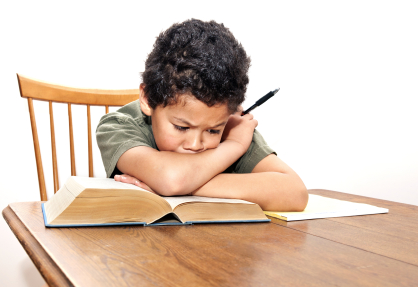DEALING WITH BACK-TO-SCHOOL ANXIETY IN YOUNG CHILDREN
Jill Stoddard
a guest blog post originally posted on SitterCity.com
As parents prepare their children for the school year to begin, it’s easy to get swept up in all the details: Are the school medical forms filled out? What’s left on the school supplies list? Have you found an after-school sitter yet?
Ticking off all the items on your family’s back-to-school checklist is important, but it’s equally important to pay attention to your child’s behavior during the weeks leading up to school. Anxiety about advancing to a new grade or starting a new school is normal; after all, people of all ages need time to adjust to a new situation. Here are a few ways you can turn those back-to-school jitters into excitement.
(Please note: If you suspect that something more than garden-variety jitters is going on, call your pediatrician who can refer you to a child psychologist for a consultation.)
Get some sleep.
A well-rested kid is a happy kid. While it’s fun to stay up late and sleep in during the summer, it’s important to get bedtime on track at least a week before school starts. Kids can feel grouchy, upset or fearful when they’re sleep deprived. Start practicing normal school day wakeups a week or two in advance so they get used to their new schedule.
Attend the open house.
Schools often host an open house a couple weeks before classes begin. Be sure to clear your schedule for it — it’s an invaluable chance for your child to meet their new teacher and start feeling comfortable with them, as well as a chance to check out their new classroom.
Plan play dates.
If you’re new to a school, open houses are also a chance for kids to mingle with their new classmates a little with the safety of you still being around, so they’re not making as many introductions on the first day of school. As you chat with the other parents, see if any of them are open to the idea of a play date, even if it’s just meeting up informally at the playground so your kids can continue to get to know each other.
Do a practice run.
If your child is starting at a new school, take the time to do a dry run of the morning commute. On one of the mornings they’re waking up early, be sure to get them dressed and out the door on time, too. Practice walking or driving to school — whatever your normal commute will entail. If your child is taking a bus to school for the first time, drive along the bus’s route and answer any questions they might have about what school buses are like.
Eat at a cafeteria.
Is this the first time your child will be eating a hot lunch at school? Go to a cafeteria-style restaurant to help them practice holding a tray, waiting in line, selecting from multiple options and sitting at a bench-style table. Even if you’re planning to pack a bag lunch, it’s doesn’t hurt to get your child used to a cafeteria-like environment.
Visit the library.
It’s time to do a little back-to-school reading! There are plenty of great children’s stories that address back-to-school anxiety. A few worth checking out are First Day Jitters by Julie Dannenberg; The Night Before Kindergarten and The Night Before First Grade, both by Natasha Wing; The Kissing Hand, by Audrey Penn; and Miss Bindergarten Gets Ready for Kindergarten, by Joseph Slate. Talk to your librarian to see if they have any other recommendations as well.
Take care of the details.
Pay attention to little things that will help make the first week of school smooth sailing. Have them pick out some new clothes and a new backpack for the first few days of school so there are no morning wardrobe meltdowns. If they’re bringing their lunch, plan out a few of their favorite meals ahead of time. Create a morning “launch pad” for backpacks and coats. These may seem like little things, but they can add up to a lot of stress for a child, and they’re easy to prepare for in advance.
Listen to them.
Keep those lines of communication open! Ask you’re child if they’re excited for school, what subject they’re looking forward to most and what friends they’re excited to see. If they’re experiencing social anxiety this is a good time to start talking it out and reassuring them. Being understanding and supportive is the most important thing you can do to ensure your little one has a great back-to-school experience.





